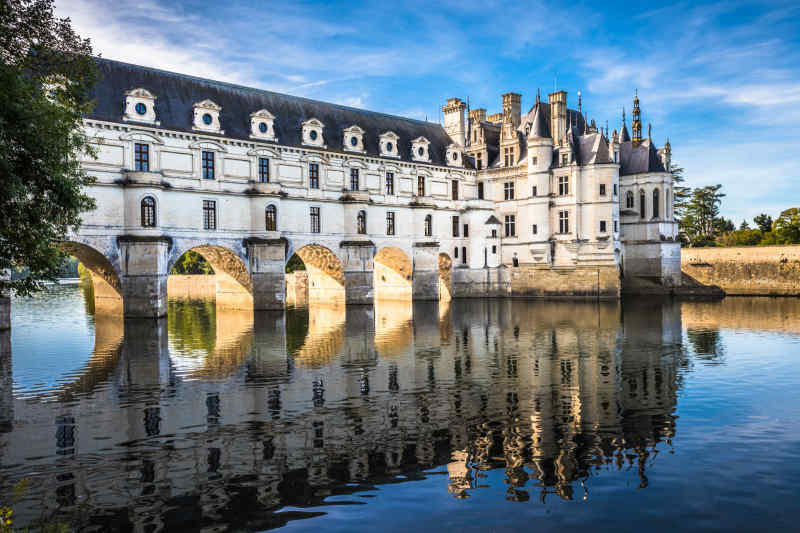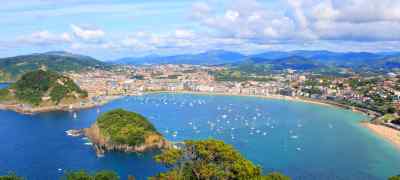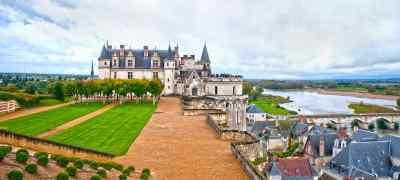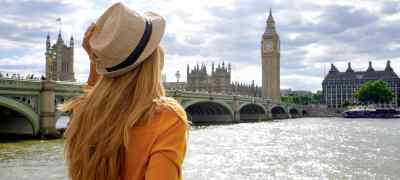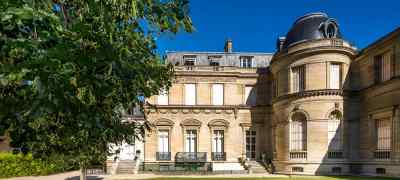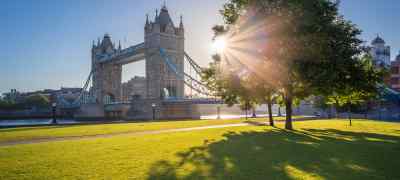By Briana Seftel
The Loire Valley in central France is almost lyrical in its beauty. Stone villages, rolling vineyards and bubbling rivers are hallmarks of this fertile valley. But it's the 42 châteaux that really set this region apart. Named a UNESCO World Heritage Site, the Loire Valley châteaux were once home to France's kings, queens, nobles and dukes. Here are 7 can’t-miss châteaux for your trip to the Loire Valley.
Château de Chambord
The largest and most visited château in the Loire Valley, Château de Chambord was built for King Francis I in the early 16th century to serve as his hunting lodge. According to legend, the King wanted to reroute the Loire river so it would pass in front of the castle (spoiler alert: he didn't get his wish). Built like a medieval fortress, the château features a square keep flanked by four towers, a Renaissance-style double helix staircase, formal gardens, and a rich depository of artworks. During World War II, Chambord served as the main repository for precious national treasures including the Mona Lisa.
Château de Chenonceau
Built atop an arched bridge on the River Cher, Château de Chenonceau is a Renaissance masterpiece. Upon first sight, you'll gasp at the château's white walls, curved turrets and formal gardens. Nicknamed Le Château des Dames (the Ladies’ Château), Chenonceau's history is shaped by powerful women, from Diane de Poitiers (a mistress of King Henry II) to Catherine de Médicis (his wife). Its lavishly decorated interior includes the Grande Galerie, the scene of many elegant parties, and European masterpieces by Rubens, Primaticcio, Tintoretto, Correggio, Van Loo, Murillo and more.
Château de Cheverny
Built between 1620 and 1640, Château de Cheverny has belonged to the same family for over six centuries. Embodying the French Classical style, the chateau is surrounded by an English-style park and four themed gardens. Built by Henri Hurault, the Comte de Cheverny, the château was briefly owned by Diane de Poitiers, mistress of King Henri II, but she preferred the grander Château de Chenonceau. Along with the estate and grounds, 100 hunting dogs live at Cheverny and can be seen on your visit. The dogs are fed at 11:30 am every day from April to September 14th, depending on availability, and from September 15th until March 31st at 11:30 am on Mondays, Wednesdays, Thursdays and Fridays, except on bank holidays.
Fun fact: Fans of the Tintin comics will recognize the château as the fictional Marlinspike Hall, Captain Haddock’s stately home.
Château d'Amboise
With panoramic views over the Loire, Château d'Amboise benefits from a strategic position in the center of the town of Amboise. It was the childhood home of King Charles VIII and later became the seat of the Kingdom of the Valois. In 1516, King Francis I summoned Leonardo da Vinci to decorate the château, which would later become both his workplace and home. The Italian master died in 1519 and his grave is located in the Saint-Hubert chapel adjacent to the château.
Château d'Ussé
Nestled on the edge of the Chinon forest overlooking the Indre river, Château d'Usse is the most "fairy tale" of the Loire Valley châteaux. According to legend, Charles Perrault is said to have modeled Sleeping Beauty's castle on this château. Furnished and inhabited by its owner, the Duke of Blacas, the chateau has beautiful French gardens, a Renaissance chapel, and even vineyards producing its own bubbly white wine.
Château de Villandry
The last of the great Loire châteaux built during the Renaissance, Château de Villandry is one of few châteaux not inhabited by royals, but by Jean Le Breton, Minister of Finance for François I. Breton was greatly interested in the art of gardening, and the formal gardens at Château de Villandry are reason enough to visit. Open 365 days a year, the six gardens are framed by a series of terraces and are all built according to a theme and layout. The ornamental vegetable garden (seen above) is arguably the most impressive garden producing a wide variety of organic produce.
Château de Sully-sur-Loire
Part medieval fortress and part châteaux, Château de Sully-sur-Loire dates back to the 15th century when it was used as a fortification to defend the bridge over the Loire river. In 1602, the Duke of Sully purchased the châteaux and built largely what visitors can see today. Its thick-walled towers, moat, keep and rampart walk will transport you back in time. The imposing châteaux played host to famous people like Joan of Arc, Louis XIV and Voltaire.


